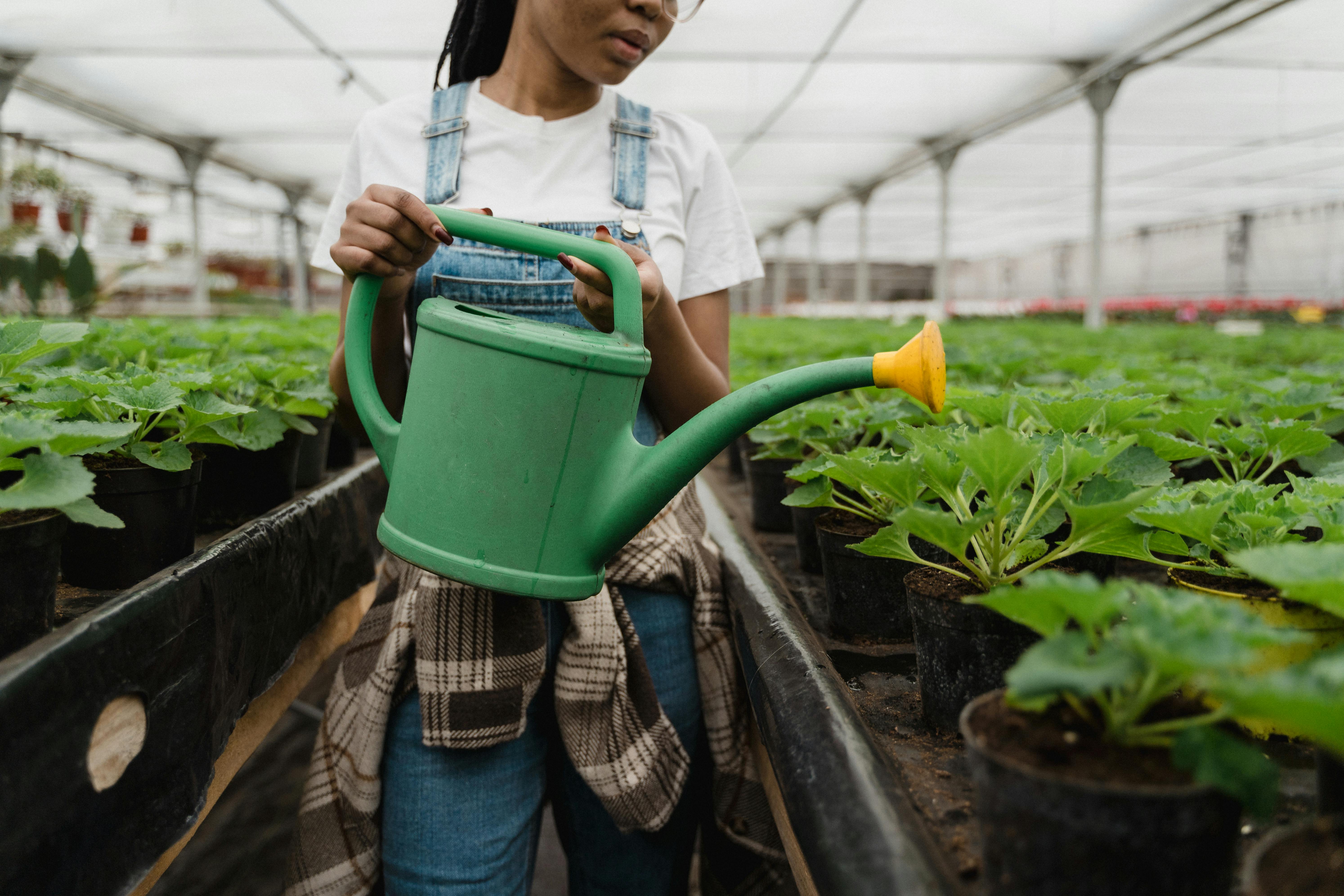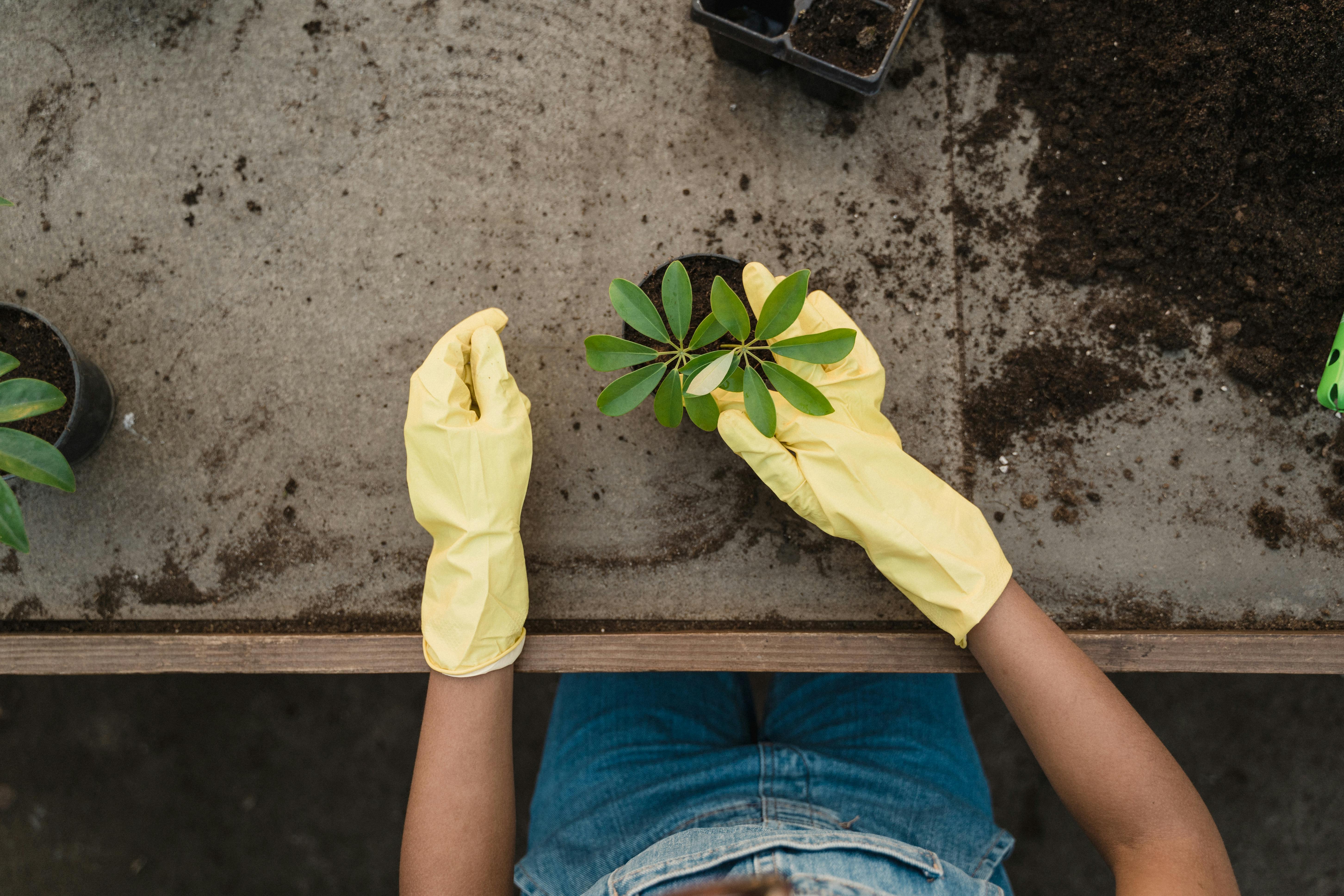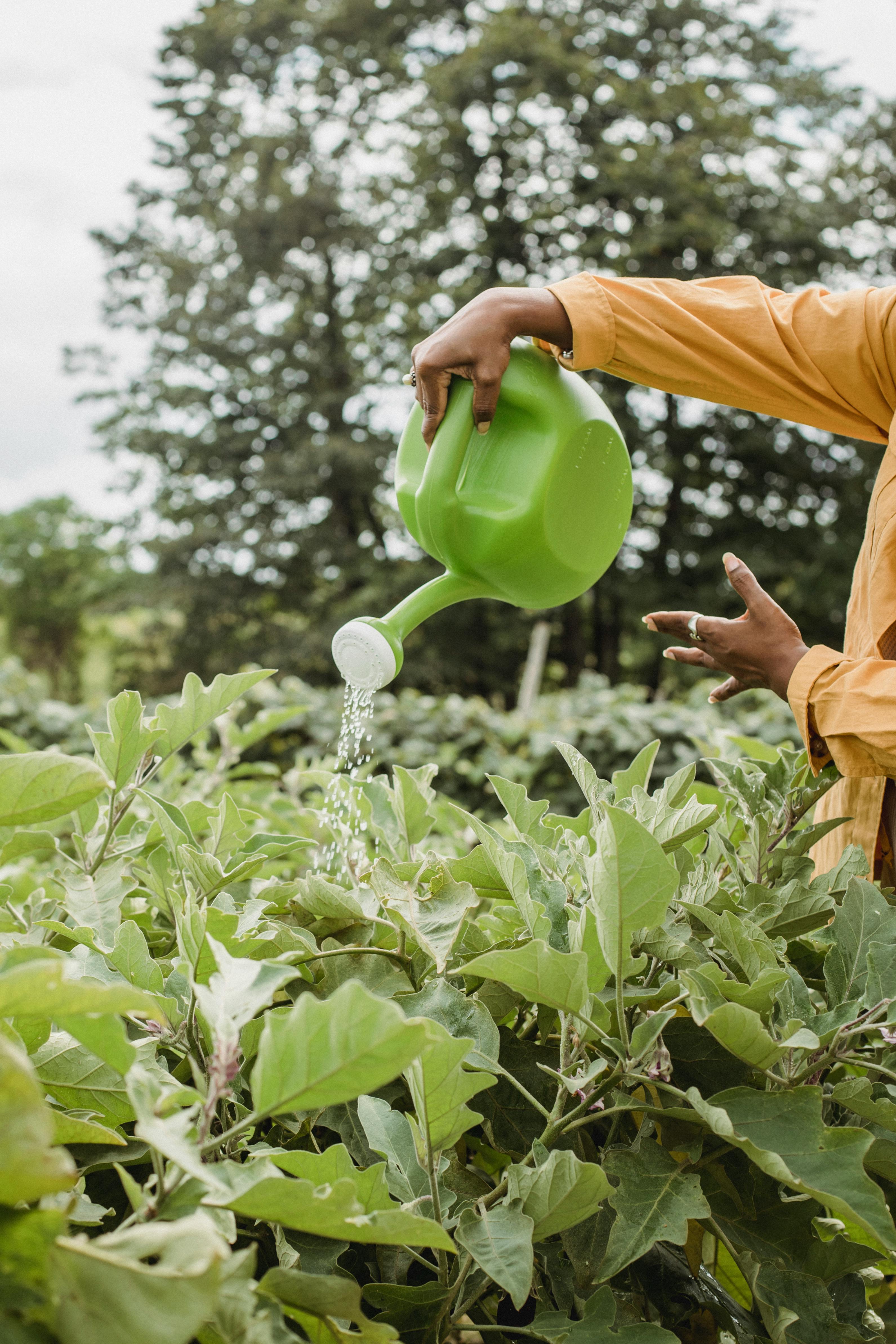
So you have a green thumb and you’ve been thinking about expanding your plant collection to include succulents. But here’s the thing, you’ve heard that these little beauties require a different kind of care and attention. The good news is, growing succulents in a greenhouse is entirely possible and can even be quite rewarding! In this article, we’ll provide you with some helpful tips and tricks to ensure that your succulents thrive in a greenhouse environment. No need to worry, we’ve got you covered every step of the way!
Choosing the Right Succulents
Understanding Different Types of Succulents
When it comes to choosing succulents for your greenhouse, it is important to have a good understanding of the different types that are available. Succulents come in a wide variety of shapes, sizes, and colors, each with their own unique characteristics. Some popular types of succulents include Echeveria, Sedum, Aloe, and Haworthia. Take some time to research and familiarize yourself with these different types so you can choose the ones that best fit your greenhouse and personal preferences.
Selecting Succulents Suitable for Greenhouse Growing
Not all succulents are well-suited for greenhouse growing. Some succulents thrive in hot and dry conditions, while others prefer more moderate temperatures and indirect sunlight. When selecting succulents for your greenhouse, it is important to consider their specific light and temperature requirements. Look for succulents that are known to tolerate higher humidity levels and can thrive in the controlled environment of a greenhouse. This will increase your chances of success and ensure that your succulents thrive in their new home.
Consideration of Climate and Light Requirements
In addition to understanding different types of succulents, you also need to consider the specific climate and light conditions in your greenhouse. Succulents generally prefer bright, indirect sunlight and warmer temperatures. However, it is important to strike a balance and avoid exposing them to excessive heat or cold. Monitor the temperature and light levels in your greenhouse regularly to ensure they are within the optimal range for your succulents. This will help promote healthy growth and prevent stress or damage to your plants.
Preparation and Placement
Preparing Greenhouse Environment
Before introducing your succulents to the greenhouse, it is important to prepare the environment to ensure their success. Start by cleaning the greenhouse thoroughly to remove any dirt, debris, or pests that may be present. Consider adding a layer of sterilized soil or a well-draining growing medium to provide a healthy foundation for your succulents. This will ensure that excess water can easily drain away and prevent the roots from becoming waterlogged.
Providing Adequate Drainage
Proper drainage is crucial for succulent health. Succulents have shallow root systems that are susceptible to root rot if they are sitting in water for extended periods. Make sure your greenhouse has adequate drainage to allow excess water to flow out of the pots or containers. You can achieve this by using pots with drainage holes, adding a layer of gravel at the bottom of the pots, or using well-draining soil mixes specifically designed for succulents.
Optimizing Placement for Temperature and Light
When deciding where to place your succulents in the greenhouse, it is essential to consider the temperature and light requirements of the plants. Place your succulents in areas where they can receive the optimum amount of sunlight without being exposed to direct, scorching rays. Keep in mind that the temperature in different parts of the greenhouse may vary, so choose the placement accordingly. A good practice is to group together succulents with similar light and temperature requirements to ensure they receive the right conditions for healthy growth.

This image is property of images.pexels.com.
Temperature and Humidity
Maintaining Optimal Temperature Range
Maintaining the optimal temperature range is crucial for the health and growth of your succulents. Most succulents prefer temperatures between 60°F (15°C) and 80°F (27°C). However, it is important to note that different succulent species have varying temperature preferences. Monitor the temperature inside your greenhouse and make adjustments as needed to keep it within the ideal range for your specific succulents. Using a thermostat or temperature control system can help you maintain a consistent temperature.
Controlling Humidity Levels
While succulents generally prefer a dry climate, maintaining a certain level of humidity in the greenhouse is important. Aim for humidity levels around 40-60% to create a favorable environment for your succulents. High humidity can increase the risk of fungal diseases, while extremely low humidity can lead to dehydration and stress for your plants. To control humidity, you can use dehumidifiers or open vents to allow for air circulation. Monitoring humidity levels and adjusting accordingly will help ensure the well-being of your succulents.
Providing Proper Ventilation
Good ventilation is essential for maintaining a healthy greenhouse environment for your succulents. Proper airflow helps prevent stagnant air, which can lead to mold, mildew, and other diseases. Make sure your greenhouse has vents or windows that can be opened to allow fresh air to circulate. Install fans if necessary to promote air movement and prevent the build-up of excess humidity. Regularly check for blockages or obstructions that may hinder proper ventilation and take corrective measures as needed.
Lighting Requirements
Understanding Succulents’ Sunlight Needs
Succulents are known for their love of sunlight, but it is crucial to understand their specific sunlight needs. Most succulents thrive in bright, indirect sunlight, while direct, intense sunlight can cause sunburn and damage to their leaves. Place your succulents in areas of the greenhouse that receive the appropriate amount of sun exposure. South-facing windows or areas with filtered light are usually ideal. If your greenhouse lacks natural sunlight, you can also use artificial lighting to supplement the needs of your succulents.
Choosing the Right Types of Artificial Lighting
If natural sunlight is insufficient, artificial lighting can be a great option for supplementing the light needs of your succulents. LED grow lights or fluorescent tubes are commonly used in greenhouses for succulent cultivation. LED lights are energy-efficient, emit little heat, and are available in various spectrums that cater to different growth stages of succulents. On the other hand, fluorescent lights are more affordable and available in different spectrums as well. Assess your needs and select the lighting option that best suits your greenhouse and succulent collection.
Positioning Lights for Even Distribution
When using artificial lighting in your greenhouse, it is important to position the lights for even distribution of light. Arrange the lights in a way that ensures all parts of your succulents receive equal light intensity. This will prevent uneven growth and ensure that all parts of the plants receive the necessary light to thrive. Adjust the height and angle of the lights as needed to provide the best coverage. Regularly monitor and adjust the lighting setup to account for changes in plant growth and to maintain the optimal environment for your succulents.

This image is property of images.pexels.com.
Watering Techniques
Determining the Watering Frequency
Watering succulents can be challenging as they do not require frequent watering like most other plants. Determining the watering frequency largely depends on factors such as the succulent species, the size of the pot, and the environmental conditions in your greenhouse. As a general rule, allow the soil to dry out completely between watering sessions. Succulents prefer periods of drought followed by thorough watering. Avoid overwatering, as this can cause root rot and lead to the demise of your succulents.
Optimizing Watering Methods
To ensure healthy growth and prevent overwatering, it is important to optimize your watering methods. When watering your succulents, use the soak and dry method. This involves thoroughly drenching the soil until water drains out from the bottom of the pot. Allow the excess water to drain completely before returning the pot to its designated spot. Avoid misting or lightly spraying the leaves of succulents, as this can increase the chances of fungal diseases. Direct the water to the base of the plant and focus on watering the roots.
Avoiding Overwatering and Underwatering
Overwatering and underwatering are common mistakes that can harm your succulents. Overwatering suffocates the roots and can lead to root rot, while underwatering causes dehydration and stunted growth. To avoid overwatering, always check the moisture level of the soil before watering. Stick a finger into the soil and only water if it feels dry at least an inch down. If in doubt, it is better to underwater than overwater, as succulents are more tolerant of drought conditions. Remember, it is easier to revive an underwatered succulent than one suffering from overwatering.
Fertilizing Succulents
Understanding Nutritional Needs of Succulents
Succulents have unique nutritional needs that differ from those of other houseplants. While they are able to survive in nutrient-poor soil, proper fertilization can greatly enhance their growth and overall health. Succulents generally require a balanced fertilizer that is low in nitrogen and higher in phosphorus and potassium. These nutrients are essential for root development, flower production, and overall plant vigor. Understanding the specific nutritional needs of your succulents will help you select the appropriate fertilizer and ensure optimal growth.
Selecting a Suitable Fertilizer
Choosing the right fertilizer is crucial for the well-being of your succulents. Look for a balanced, slow-release fertilizer specifically formulated for succulents. It should have a low nitrogen content to prevent excessive growth and focus on providing the necessary nutrients in a controlled manner. Alternatively, you can opt for organic fertilizers such as compost or worm castings, which provide a natural and gentle source of nutrients. Avoid using fertilizers intended for other types of plants, as they may contain excessive nitrogen levels that can harm your succulents.
Applying Fertilizers Correctly
Applying fertilizers correctly is essential to prevent overfertilization and potential damage to your succulents. Always follow the instructions on the fertilizer packaging and use the recommended amount. Generally, it is best to fertilize your succulents during their active growing season, typically in spring and summer. Avoid fertilizing during periods of dormancy or when your succulents are stressed or showing signs of illness. Apply the fertilizer to moist soil, as this allows for better absorption and prevents burning of the roots. Remember, less is more when it comes to fertilizing succulents.

This image is property of images.pexels.com.
Pest Control
Identifying Common Succulent Pests
Even in a greenhouse setting, succulents can still fall victim to pests. Some common pests that may attack your succulents include mealybugs, aphids, spider mites, and scale insects. These pests can cause damage to the leaves, stems, and roots of your plants. Regularly inspect your succulents for any signs of infestation, such as webs, adult insects, or visible damage. Early detection is key to preventing major infestations and minimizing the damage caused by pests.
Implementing Preventive Measures
Preventing pest infestations is always preferable to dealing with them once they occur. Implementing preventive measures can help ensure the health and vitality of your greenhouse succulents. Start by practicing good hygiene by regularly cleaning your greenhouse and removing any dead leaves or debris that can harbor pests. Inspect new succulents before introducing them to your greenhouse to prevent bringing in pests unknowingly. Additionally, avoid overcrowding your succulents, as this can create a favorable environment for pests to thrive.
Using Organic Pest Control Methods
If you do encounter a pest problem, consider using organic pest control methods to eliminate the pests without harming your succulents or the environment. Natural predators, such as ladybugs or predatory mites, can be introduced to the greenhouse to help control pest populations. Neem oil or insecticidal soap can also be used to treat infested plants. Both options are safe for succulents and can effectively eliminate pests. Regularly monitor your succulents for signs of new infestations and take prompt action to prevent the pests from spreading.
Propagation Techniques
Learning Different Methods of Propagation
Propagation is an exciting way to expand your succulent collection and share the joy of growing succulents with others. There are several methods of succulent propagation, including leaf cuttings, stem cuttings, and division. Leaf cuttings involve removing individual leaves from a mature succulent and allowing them to root and form new plants. Stem cuttings involve removing a part of a stem and rooting it to create a new plant. Division involves separating offsets or pups from the parent plant and potting them individually. Research and practice different propagation methods to find the ones that work best for you.
Providing Ideal Conditions for Propagation
Successfully propagating succulents requires providing them with ideal conditions for root development and growth. Start by using well-draining soil or a specialized succulent mix, as this will prevent excess moisture and promote healthy rooting. Place the cuttings or divided offsets in a warm and bright area of the greenhouse that receives indirect sunlight. Mist the cuttings lightly with water to keep them slightly moist, but avoid overwatering. Creating a humid environment by covering the cuttings with a plastic dome can also aid in successful propagation.
Caring for New Succulent Offspring
Once your succulent cuttings or divisions have successfully rooted and established themselves, it is important to care for them properly. Gradually acclimate the new plants to their environment by exposing them to increasing amounts of sunlight and reducing humidity levels. Water the new plants sparingly until they are fully established and demonstrate signs of active growth. Treat them as you would mature succulents, adjusting watering, lighting, and fertilizing based on their individual needs.

Seasonal Care
Adjusting Care for Seasonal Changes
Succulents, like most plants, go through different growth cycles throughout the year. It is important to adjust your care routine to meet the changing needs of your succulents with each season. During spring and summer, when succulents are in their active growth phase, provide them with more sunlight and increase watering frequency. In fall and winter, when succulents enter their dormant period, reduce watering and provide them with less light. Pay attention to the specific needs of your succulents and adjust your care accordingly to ensure their overall health and well-being.
Preparing Succulents for Dormancy
As winter approaches and temperatures drop, many succulents enter a period of dormancy. During this time, their growth slows down, and they require less water and sunlight. To prepare your succulents for dormancy, gradually reduce watering frequency and allow the soil to dry out more between waterings. Provide them with less hours of direct sunlight or move them to an area with lower light intensity. Avoid fertilizing during this period, as succulents do not require additional nutrients when they are dormant.
Protecting Succulents from Extreme Weather
Extreme weather conditions, such as frost, excessive heat, or heavy rain, can be detrimental to your greenhouse succulents. Take precautions to protect your succulents from these conditions. During winter, provide additional insulation to your greenhouse to prevent frost damage. If there is a heatwave, provide shade or move your succulents to a cooler location to prevent sunburn. In times of heavy rain, ensure that your greenhouse has proper ventilation and drainage to prevent waterlogging. Pay attention to weather forecasts and take preventive measures to safeguard the well-being of your succulents.
Common Mistakes to Avoid
Overwatering Succulents
One of the most common mistakes when it comes to succulent care is overwatering. Succulents are adapted to survive in arid conditions and can store water in their leaves and stems. Overwatering can lead to root rot and cause the succulent to decline. Avoid the temptation to water your succulents too frequently and only water when the soil is completely dry.
Neglecting Lighting Requirements
Another mistake is neglecting the lighting requirements of succulents. Succulents need bright, indirect sunlight to thrive. Insufficient light can result in weak, etiolated growth and a lack of vibrant colors. Place your succulents in areas where they can receive adequate sunlight or supplement with artificial lighting if needed.
Applying Excessive Fertilizer
Overfertilization is another mistake that can harm your succulents. Succulents have low nutrient requirements, and excessive fertilizer can lead to salt buildup in the soil. This can cause root burn and hinder the plant’s ability to absorb water. Follow the recommended dosage and frequency when fertilizing, and remember that less is often more when it comes to succulents.
Ignoring Signs of Pests or Diseases
Ignoring signs of pests or diseases is a mistake that can have severe consequences for your succulents. Regularly inspect your plants for any signs of pests, such as webs, discolored leaves, or sticky residue. Act promptly if you detect any issues and take appropriate measures to control and eliminate pests or diseases. Early intervention can prevent the infestation from spreading and causing irreparable damage to your succulents.
Growing succulents in a greenhouse can be a rewarding and enjoyable experience. By understanding the different types of succulents, properly preparing the greenhouse environment, providing the right temperature and light conditions, and implementing proper watering, fertilizing, and pest control techniques, you can create an ideal environment for your succulents to thrive. Remember to adjust your care routine based on seasonal changes, protect your succulents from extreme weather, and mitigate common mistakes such as overwatering or neglecting lighting requirements. With proper care, your succulents will flourish in their greenhouse habitat and bring you years of beauty and enjoyment.


